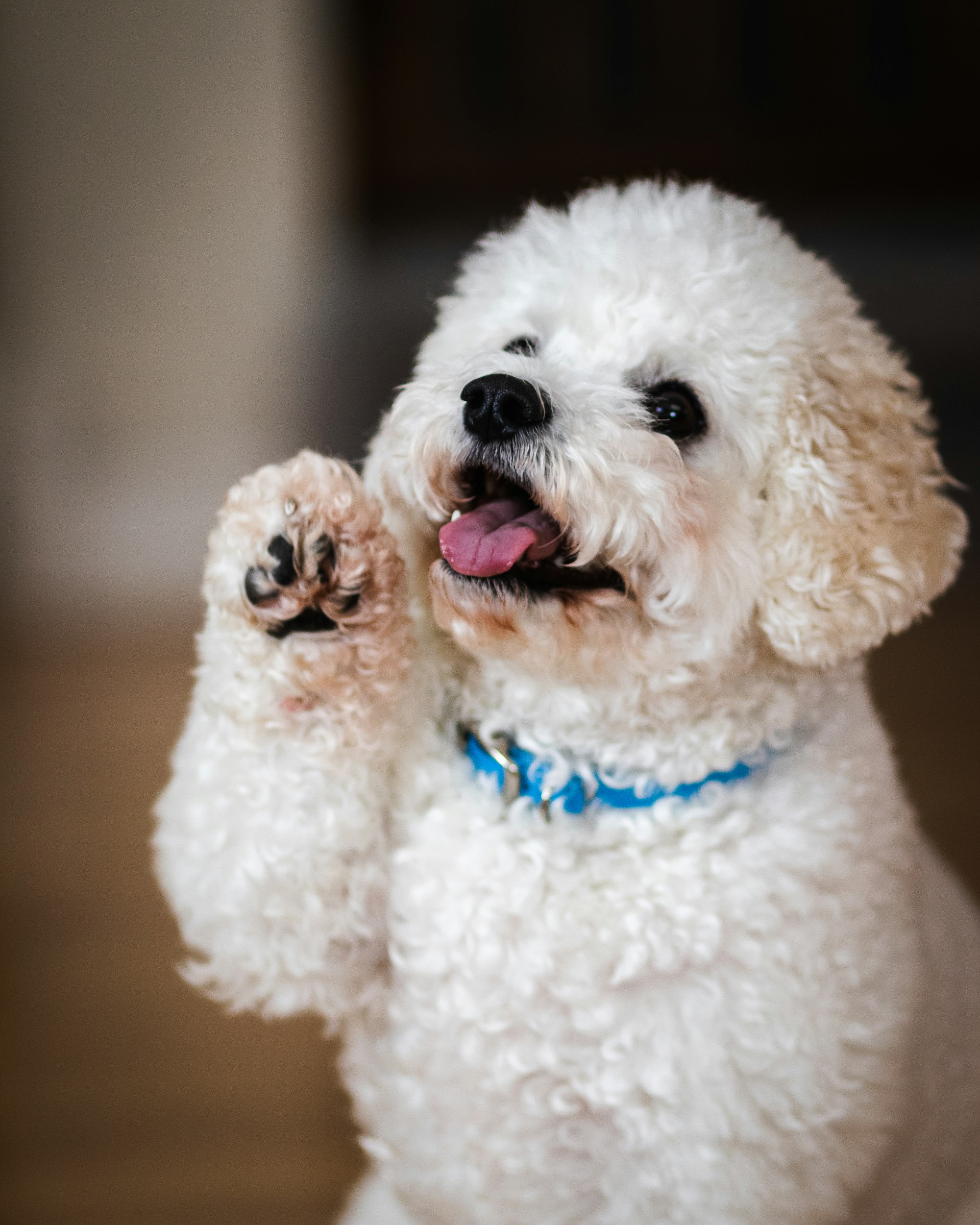It's a scene many of us have experienced - you're sitting on the couch, relaxing after a long day, and suddenly your dog approaches, raising its paw as if extending a greeting. It's an endearing and somewhat puzzling behavior, leaving us wondering why our canine friends engage in this gesture spontaneously.
This article explores the intriguing phenomenon of dogs giving their paw without asking. We delve into the underlying reasons behind this behavior, examining the intricate bond between dogs and their owners. Additionally, we highlight the communication methods employed by dogs and how this particular gesture fits into their repertoire.

Understanding the Behavior of Giving Their Paw
While the act of dogs offering their paw is widely observed, it still manages to evoke curiosity and wonder. It is considered strange because it appears to be a voluntary behavior initiated by the dog without any direct prompting from the owner. This natural inclination to extend their paw is often interpreted as a desire for connection or a form of canine communication.
Following are some of the reasons for this behavior:
- Seeking attention and affection: Dogs are social animals and thrive on human interaction. Offering their paw may be their way of seeking attention, affection, or physical contact from their owners. It's their way of saying, "I want to be close to you" or "Pay attention to me."
- Conditioning and training: Dogs are intelligent creatures that learn through associations and positive reinforcement. If a dog has been trained to offer their paw in response to a particular cue or command, it may display this behavior as a learned response to gain rewards or attention.
- Mimicking learned behaviors: Dogs are excellent observers and can mimic behaviors they have seen in their environment owners engaging in the paw-giving behavior, they may imitate it themselves. Dogs are known to learn from each other and from their human counterparts, so it's possible that they have picked up this behavior through observation and mimicry.
- Bonding and trust-building: Dogs form deep emotional bonds with their owners, and physical contact plays a significant role in strengthening that bond. Offering their paw may be a way for dogs to initiate physical contact and reinforce the bond of trust with their owners. It can be seen as a gesture of submission, indicating that they trust their human companion and feel safe in their presence.
- Instinctual behavior: Some experts believe that paw-giving behavior has roots in a dog's ancestral instincts. In the wild, canines engage in various social behaviors, including pawing and touching each other as a means of communication and establishing social hierarchy. It's possible that domesticated dogs retain some of these instincts and express them through the paw-giving gesture.

Bonding and Trust
Dogs have an innate need for physical contact and touch as part of their social and emotional well-being. Physical interactions, such as petting, hugging, and gentle touch, serve as powerful bonding mechanisms for dogs. Through physical contact, dogs experience a sense of security, comfort, and affection from their owners. It promotes the release of oxytocin, often referred to as the "bonding hormone," in both humans and dogs, strengthening the emotional connection between them.
Significance of the paw gesture as a sign of trust and connection
The act of a dog offering its paw holds great significance in the realm of canine communication. When a dog voluntarily extends their paw to their owner, it can be seen as a demonstration of trust and a desire for connection.
The paw gesture can also be interpreted as an invitation for further physical interaction and attention. It signals a dog's desire for companionship and reinforces the mutual trust and affection shared between them and their owner.
Furthermore, therapy dogs and service dogs, who work closely with humans in various capacities, exemplify the incredible trust and connection that can be established between dogs and their owners. These specially trained canines often exhibit behaviors, including offering their paw, as a means of providing support, comfort, and assistance to their human counterparts.

Canine Communication
Dogs communicate with humans through a combination of vocalizations, body language, and gestures. While they may not use verbal language as humans do, they have a remarkable ability to convey their thoughts, feelings, and intentions.
- Vocalizations: Dogs use barks, whines, growls, and other vocal sounds to communicate different messages. Each vocalization carries a specific meaning, such as signaling excitement, fear, aggression, or playfulness.
- Body Language: Dogs rely heavily on body language to express themselves. Their posture, tail position, ear position, and facial expressions convey a wide range of emotions and intentions. For example, a relaxed body posture with a wagging tail usually indicates friendliness and contentment, while a stiff body, raised hackles, and a tense facial expression may signify fear or aggression.
- Gestures: Dogs also use gestures, including pawing, nudging, leaning, and offering their paw, to communicate with humans. These physical actions can convey various messages, such as seeking attention, indicating submission, or requesting interaction.
Body language and gestures play a vital role in dog-human interaction. As humans, understanding and interpreting a dog's body language can help us gauge their emotions, intentions, and overall well-being. By paying attention to their postures, facial expressions, and tail movements, we can better respond to their needs and provide appropriate care and attention.
Likewise, our own body language and gestures impact how dogs perceive and respond to us. Dogs are highly attuned to human body language, and they can pick up on subtle cues and signals we may not even be aware of. Therefore, being mindful of our own body language and using consistent, calm, and non-threatening gestures can promote clear communication and strengthen the bond between humans and dogs.
Offering their paw can be a form of non-verbal communication from dogs
Offering their paw is a significant form of non-verbal communication from dogs. It can convey a range of messages, such as seeking attention or interaction, trust and connection, and learned behavior.
In conclusion, the paw-giving behavior of dogs is a fascinating and heartwarming gesture that showcases their desire for connection, trust, and communication with their human companions.
Find more helpful articles on pet-parenting at the Off Leash blog at TryFi.com.
Also, be sure to check out TryFi's Fi Dog Collar, a cutting-edge GPS tracking collar that keeps you updated on your dog's location, activity, sleep, and alerts you if they escape the backyard. Try the Fi Dog Collar today!






